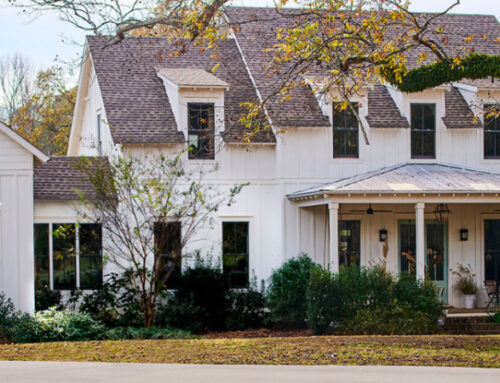We’ve got a lot of people in Nevada County who are buying land so they can build their own home. Building a new home is something not everyone gets to experience. It’s an expensive, long, and trying process. However, you get to construct your home exactly to your taste, with the components and finishes you want and can afford. Often you’ll be deciding what is worth the money to do now and what you’d prefer to save as a renovation project to do later. There are a number of factors to consider, including how long you plan to live in the home, whether you’ll be able to put upgrades directly onto your mortgage or pay out of pocket, and what upgrades are valuable for resale. Upgrading later by doing it yourself can sometimes be a good plan, allowing you to avoid paying the builder’s premium. But sometimes waiting will not only not save you money, it will cost you more in the end or create a headache when the upgrade is finally addressed. So here is our now-or-never list: upgrades that will be difficult, costly or nearly impossible to do later. If you’re building a new home, you’d be wise to check these off the list now.
The Stairs
Before construction can begin, the builder has to finalize plans and submit them to your city, town or county for approval and permits. Depending on your builder and where you live, this may mean you’ll have an opportunity to make some changes to your plan prior to submission. One big element to address now is the staircase. If you’re building your home with a production builder — that is, a builder constructing a home development, usually in a suburban neighborhood — the typical builder’s-grade staircase is carpet over plywood. Unless you’re prepared to rip out the entire staircase later, which is no small feat, now is the time to request solid wood. Wood staircases come in different varieties, so be sure to ask what your builder offers and at what additional charge. Wood upgrades are usually either oak or maple, which have very different looks. Oak has a heavier grain, while maple is smoother and more subtle in texture. These woods also differ on price, with maple being the more expensive. Do you want a stair runner? If you’re on the fence, then wait. That way, you won’t have marks from installing the carpet left in your wood if you change your mind. If you plan to upgrade to solid wood stairs, the other thing to consider is the flooring that abuts the staircase. The stairs are stained on site, and if you select a prefinished flooring, it’s important to ensure that the stain used on the staircase is the best possible match. Bear in mind that an exact match is unlikely, but you’ll usually be able to get pretty close. Ask questions and be involved in the stain selection process, or at least make sure the painter custom-mixes a stain to work with your flooring.
Recessed Lighting
While can lights themselves are generally inexpensive to buy at any big-box store, installing them is another matter. Of course, there is a major difference between replacing lightbulbs and completely changing the type of light. Avoid the hassle of an electrician cutting into your brand-new drywall to install the lights and switches. If your builder has an upgrade, just go for it now. Make sure that you choose something that you not only like but will continue to like well into the future.
Tub and Shower
Two of the first elements to be installed in your home after framing are the bathtubs and showers. If you want an upgrade such as soaker tubs, jets or multiple shower heads, plan for it now. Once tubs and showers are installed and tiled, they require a sledgehammer to change out later. You don’t want to have to go through the hassle of changing something later that could have easily been decided upon early on in the process.
Niches and Half Walls
Structural upgrades in the bathroom that would require a full remodel to do later are wise to tackle now. These include tiled niches — perfect for soap and shampoo bottles — as well as half walls for glass shower walls and doors. You might also think about how you can incorporate niches and half walls in other areas of your home, perhaps for displaying art or partitioning rooms, respectively. Any remodel that requires framing and drywall is messy and disruptive, so unless you’re prepared to live with the dust, now is the time to discuss these ideas with your builder.
Radiant Floor Heating
Radiant floor heating is nice to have, especially in the bathroom to warm your feet on what would otherwise be cold tile. But this is one of those items that needs to be done before the tile is installed, so keep this in mind if it’s on your wish list. Installing it later is a big job that requires busting up the tile first and having a clean subfloor on which to install the product before tiling again. A simple change in the beginning can make a world of difference in the end.
Door From Garage to House
Some builders include this, while many offer it as an upgrade. Access from the garage to the house is a great feature, allowing you to avoid the elements. Because of grading, there are some circumstances where a door to the house from the garage is not possible. Be sure to ask so you aren’t surprised later. Also, be aware that, in some instances, the garage is not on the same level as the rest of the house, so you will have to build stairs up to the house.
Anything to Do With Windows
Have a close look at your plan and find out whether it’s possible to upgrade the windows or add more. Depending on your city’s bylaws regarding the percentage of glass you can have in correlation with the distance to the property line, your builder may be able to add a couple more windows to your plan or enlarge the ones that are already there. Also, if you like the look of windows with mullions, this may be an upgrade as well. Be aware that with windows you want to make sure that you get ones that help keep air in. Splurge for the nicely insulated ones now, your utility bills will thank you later.
Gas Fireplace
To decide whether to tackle this project now or later, consider these facts about gas fireplace installation. For starters, you obviously need to run a gas line to the fireplace location. If you want your fireplace to be flush with the wall, you’ll usually need a foundational bump-out to support the weight of the unit, and that must be on the plans early. If you like the look of a flush fireplace wall, building one later would become a pretty major structural renovation, so best to do it now. If it’s too late to build the fireplace out the exterior wall, the unit must be installed into the room, usually framed into a drywall box-out. It’s possible that you’d be able to select the depth of the box-out — as in, how far into the room it will go — to accommodate flanking bookcases, for example. This is also a good opportunity to have an electrical outlet for your TV installed above the fireplace, if you desire. Also, if you require a gas line for your kitchen range, it’s best to do it now.
Insulation
An item that is really impossible to upgrade later is the type of insulation you have in your walls. Builders will usually use batt insulation at the minimum code requirement, but often you’re able to upgrade to a higher value batt, or a more expensive spray foam. Looking to have a future music or theater room? Ask about your soundproofing options now, as this affects both the type of insulation and drywall used. Thinking about your insulation now will save you a lot of money down the line.
One pretty valuable upgrade, in terms of function and resale value, is the basement bathroom. It’s inadvisable to finish a basement within the first year of its build. Among the reasons: The foundation needs time to settle, the concrete needs to dry and finishing it too early could void a new homeowner’s warranty. But preparing for finishing it is wise. Upgrading to add the basement bathroom rough-in, which means the ABS pipes and drains are in place and ready to go, is something that will be costly and disruptive to do later.
Tech Stuff
Anything that is wired in your walls is best done when the house is being built, along with your other electrical work. Think speakers, outlet placement, conduits for equipment wires, data ports, alarm systems, or smart-home technologies. Again, punching holes in drywall all over your house to accommodate these items is more than an inconvenience, and it’s an expense you’ll want to dodge.
Building your home can be an exciting and expensive process. But, if you have the patience and the foresight, you can create your dream home. Now go find that parcel of land that speaks to you!
Looking to buy or sell in the Nevada County area? Give a Coldwell Banker agent a call today!





